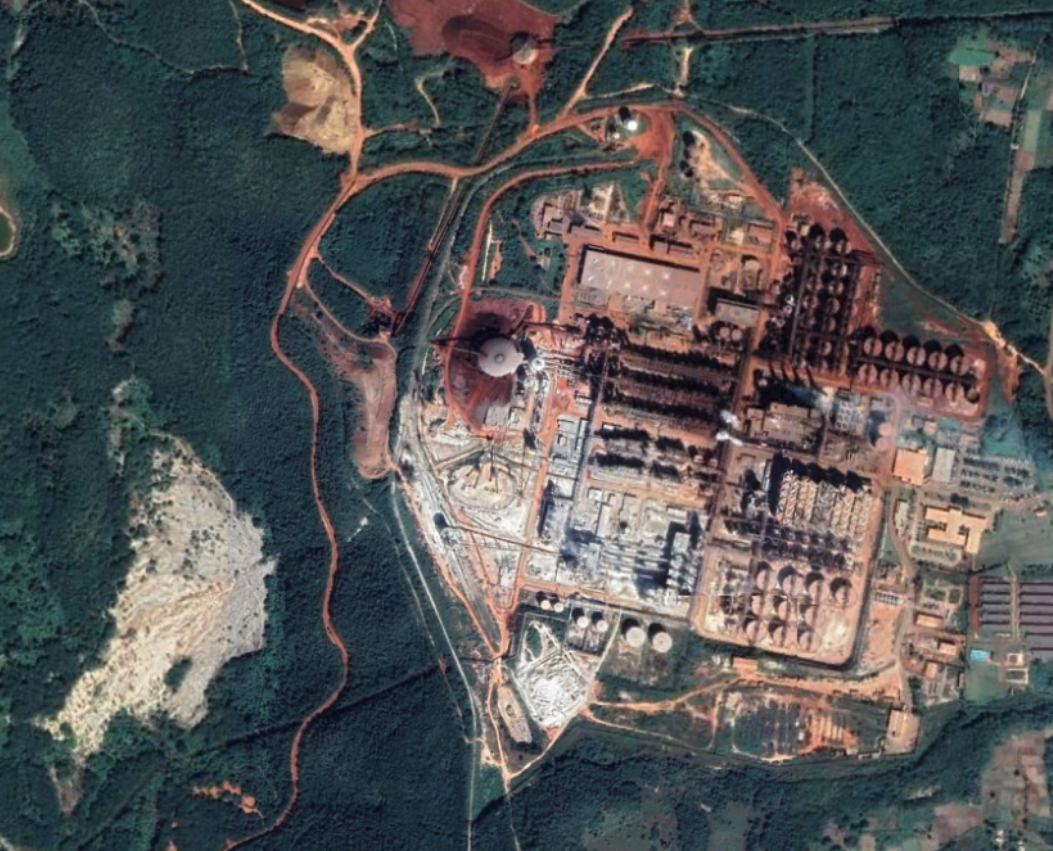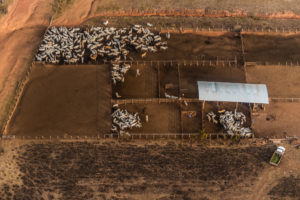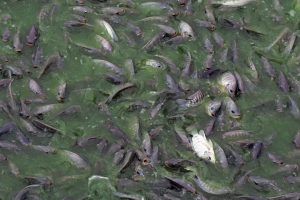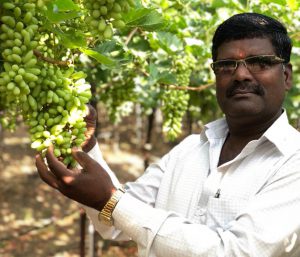Political and social crises rocked Bolivia, Chile, Colombia, Ecuador and Venezuela in 2019, making headlines worldwide. So too did the fires that tore through parts of the Amazon in August and September. In a year of fast-paced news and seismic changes, Diálogo Chino also brought our readers stories that considered longer-term trends and offered unique insights on the relationship between China, Latin America and the environment. Below, our editors pick their top stories of the past 12 months.
Manuela Andreoni, Brazil editor
China’s Brazilian beef demand linked to Amazon deforestation risk
 This article summarises a lot of what we learned in 2019 about the drivers of deforestation in the Amazon and its connection with China’s growing demand for beef and soybeans. The beautiful pictures and the interactive map showing a growing cattle population in every state in the region forces us to imagine a new Amazon, one that looks nothing like the massive tropical forest we learned about in school. I’m also very glad this was the product of a collaborative effort between Diálogo Chino and InfoAmazonia, a project we all admire.
This article summarises a lot of what we learned in 2019 about the drivers of deforestation in the Amazon and its connection with China’s growing demand for beef and soybeans. The beautiful pictures and the interactive map showing a growing cattle population in every state in the region forces us to imagine a new Amazon, one that looks nothing like the massive tropical forest we learned about in school. I’m also very glad this was the product of a collaborative effort between Diálogo Chino and InfoAmazonia, a project we all admire.
Andrés Bermúdez Liévano, Andean region editor
Indigenous communities take action over Ecuador’s largest mine
 Social and environmental conflicts are messy. Stakeholders try hard to simplify the story arc of what happened and what pits actors against each other. Putting on rubber boots (literally) and taking the time to look at them in their complexity usually pays off, allowing us to shed light not only on how problems began and unfolded but, more importantly, on what other factors are overlooked and whether solutions are possible. With a copper mine, self-declared indigenous people, a peace deal, a lost biological world and purple frogs, this story has it all.
Social and environmental conflicts are messy. Stakeholders try hard to simplify the story arc of what happened and what pits actors against each other. Putting on rubber boots (literally) and taking the time to look at them in their complexity usually pays off, allowing us to shed light not only on how problems began and unfolded but, more importantly, on what other factors are overlooked and whether solutions are possible. With a copper mine, self-declared indigenous people, a peace deal, a lost biological world and purple frogs, this story has it all.
Alejandra Cuéllar, editor for Mexico and Central America & the Caribbean
The search for Mexico’s sea cucumbers
 All over the world, the sea cucumber has started disappearing. Chinese consumers are prepared to pay high prices for its use in traditional medicine and cuisine. We produced a video about the issue, an important step towards understanding the phenomenon of trafficking endangered species from Latin America to China. The local sea cucumber population was so low when I went to Mexico’s Yucatán Peninsula, that my crew and I were fortunate to spot any out to sea. Once, they were abundant near the shore. The video explores how Chinese demand initially brought in a surge in income for local people, but with the consequence of environmental and social degradation. Local corruption facilitates the illegal trading of species, and enforcement of environmental laws is lax. This is why international bodies’ regulation and monitoring of such cases, along with media reporting, is crucial. The decimation of a species cannot go unnoticed.
All over the world, the sea cucumber has started disappearing. Chinese consumers are prepared to pay high prices for its use in traditional medicine and cuisine. We produced a video about the issue, an important step towards understanding the phenomenon of trafficking endangered species from Latin America to China. The local sea cucumber population was so low when I went to Mexico’s Yucatán Peninsula, that my crew and I were fortunate to spot any out to sea. Once, they were abundant near the shore. The video explores how Chinese demand initially brought in a surge in income for local people, but with the consequence of environmental and social degradation. Local corruption facilitates the illegal trading of species, and enforcement of environmental laws is lax. This is why international bodies’ regulation and monitoring of such cases, along with media reporting, is crucial. The decimation of a species cannot go unnoticed.
Fermín Koop, Southern Cone editor
China builds Latin America’s largest solar plant
 The need to decarbonise energy systems as a way to reduce greenhouse gas emissions is moving many countries from fossil fuels to cleaner technologies such as solar and wind. Latin America is no exception with its hundreds of projects across the region – in many cases developed with China’s help. The article looks at China’s interest in investing in solar globally by reviewing a specific project in Argentina, set to become the largest solar plant in Latin America. We were able to combine on-the-ground reporting at the plant’s construction site with deep, contextual information on China’s solar plans across the globe.
The need to decarbonise energy systems as a way to reduce greenhouse gas emissions is moving many countries from fossil fuels to cleaner technologies such as solar and wind. Latin America is no exception with its hundreds of projects across the region – in many cases developed with China’s help. The article looks at China’s interest in investing in solar globally by reviewing a specific project in Argentina, set to become the largest solar plant in Latin America. We were able to combine on-the-ground reporting at the plant’s construction site with deep, contextual information on China’s solar plans across the globe.
Ma Tianjie, Beijing director, China Dialogue
China eyes Argentina in global nuclear roll out
 A key ambition of China’s Belt and Road Initiative is the export of Chinese high-end technology and infrastructure to help its industries upgrade. China no longer wants to just sell the world t-shirts and socks. It is eyeing market shares in sectors such as high-speed rail and power plants that are traditionally the turf of industrial powerhouses like Germany and Japan. The nuclear power sector is one of the key areas where China is keen to compete. Fermin’s article explains well the complicated local dynamics of nuclear power in Argentina that is at once informative to a Latin American audience and a Chinese audience: a tale of caution for Chinese policy makers and business executives with high hopes of pocketing major deals in a country with great uncertainties.
A key ambition of China’s Belt and Road Initiative is the export of Chinese high-end technology and infrastructure to help its industries upgrade. China no longer wants to just sell the world t-shirts and socks. It is eyeing market shares in sectors such as high-speed rail and power plants that are traditionally the turf of industrial powerhouses like Germany and Japan. The nuclear power sector is one of the key areas where China is keen to compete. Fermin’s article explains well the complicated local dynamics of nuclear power in Argentina that is at once informative to a Latin American audience and a Chinese audience: a tale of caution for Chinese policy makers and business executives with high hopes of pocketing major deals in a country with great uncertainties.
Robert Soutar, managing editor
Aluminium refinery sickens Jamaicans
 One of our ultimate aims on Diálogo Chino is to help explain how China’s domestic economic and environmental pressures translate into impacts on the ground in Latin America and the Caribbean. Jevon’s article told the story of communities in Upper and Lower Warminster, Jamaica, who were sickened by air and water pollution from an aluminium refinery owned by Jisco, a Chinese company with a questionable environmental record at home. This award-winning article collected testimonies from affected communities, connecting them, local journalists and government authorities with Chinese-language information that might have otherwise been unavailable. It had a significant impact locally. Subsequent to publication, the plant’s owner Jisco was hit with 16 environmental enforcement orders and has suspended operations while it carries out upgrades to waste management systems.
One of our ultimate aims on Diálogo Chino is to help explain how China’s domestic economic and environmental pressures translate into impacts on the ground in Latin America and the Caribbean. Jevon’s article told the story of communities in Upper and Lower Warminster, Jamaica, who were sickened by air and water pollution from an aluminium refinery owned by Jisco, a Chinese company with a questionable environmental record at home. This award-winning article collected testimonies from affected communities, connecting them, local journalists and government authorities with Chinese-language information that might have otherwise been unavailable. It had a significant impact locally. Subsequent to publication, the plant’s owner Jisco was hit with 16 environmental enforcement orders and has suspended operations while it carries out upgrades to waste management systems.






![A temporary shelter built on the floodplain, far from home and close to the farms. Most river communities understand the futility of setting up permanent structures on flood plains [image by: Siddharth Agarwal]](https://dialogue.earth/content/uploads/2019/08/Ganga1-1-300x200.jpg)

